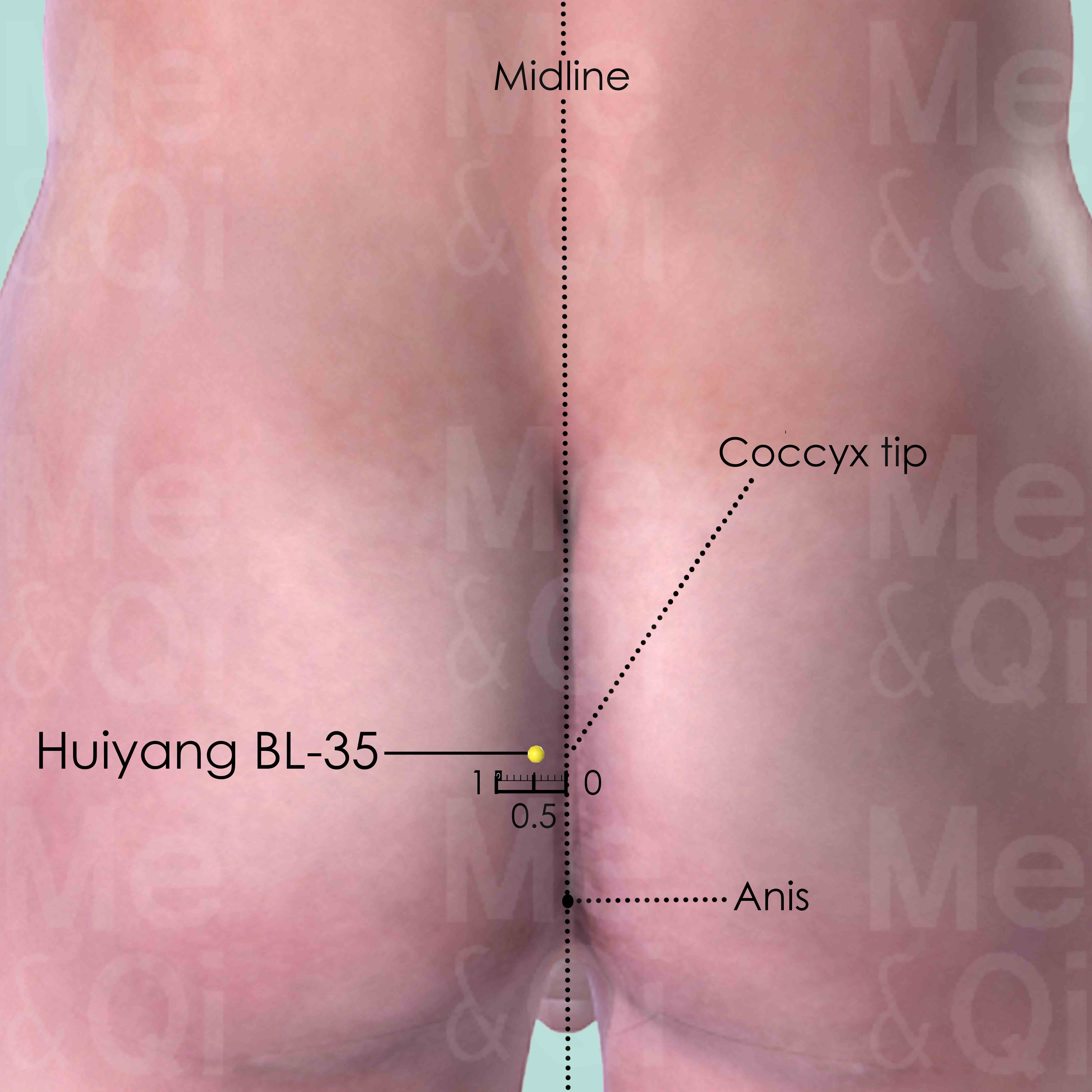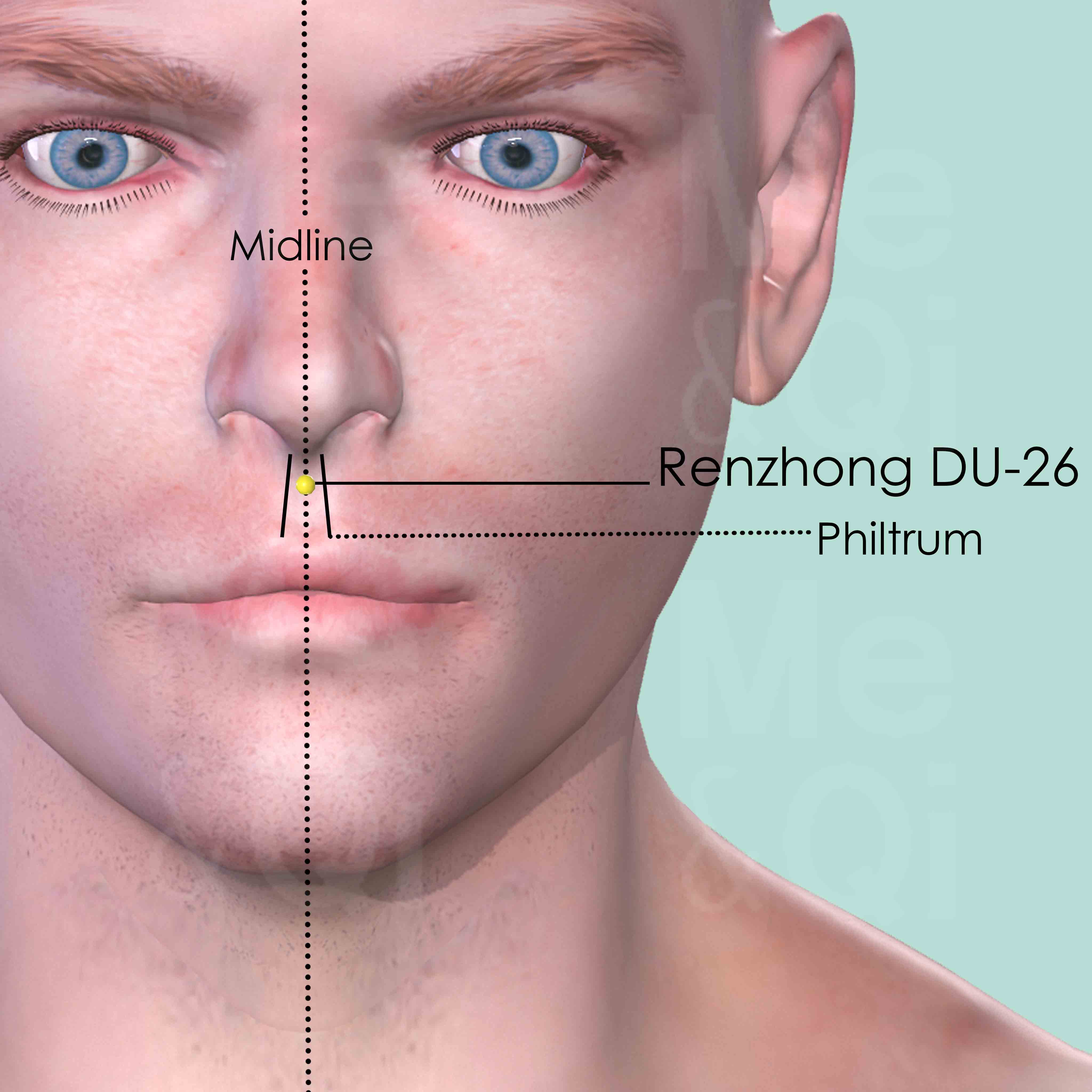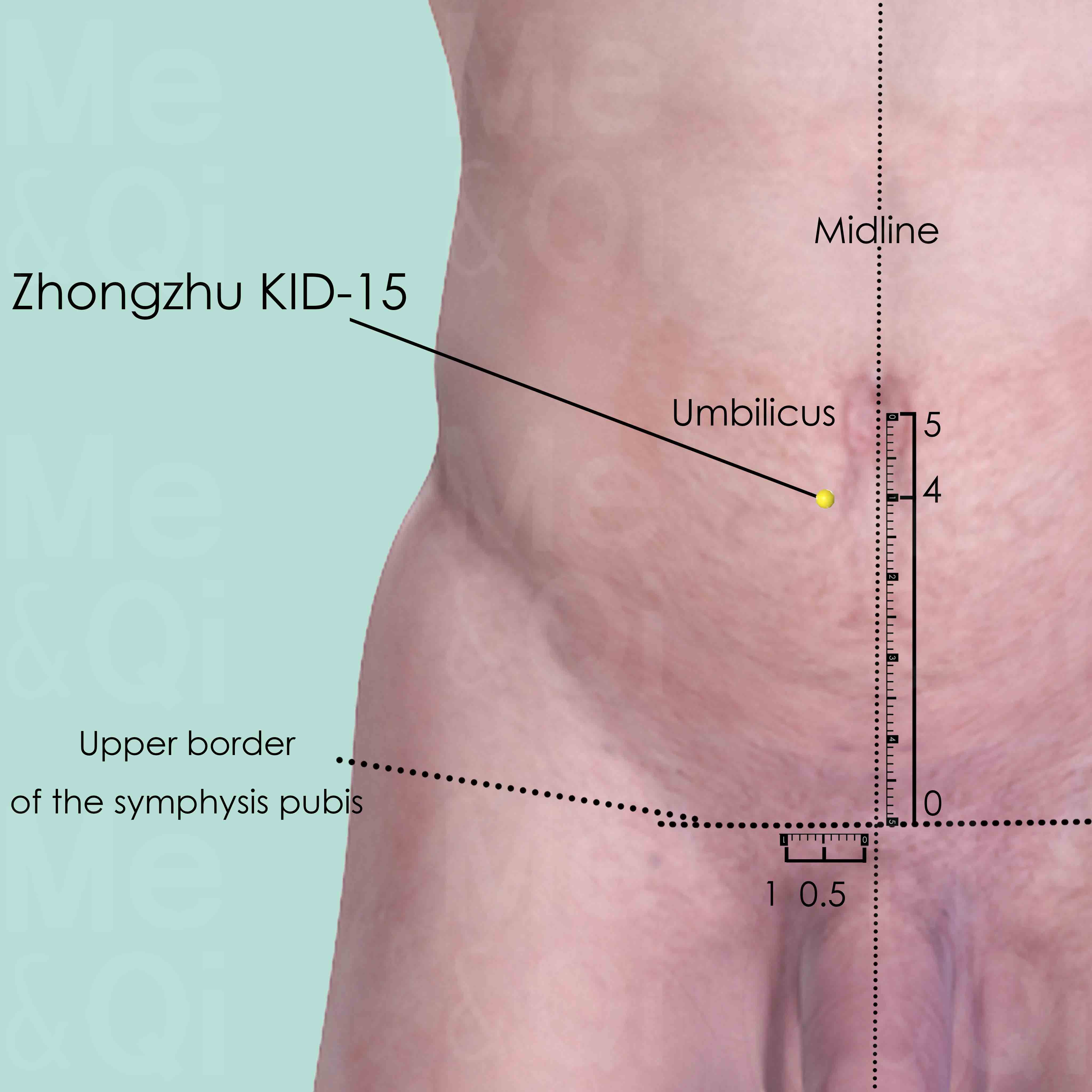Lumbar Painaccording to TCM
Symptom families: Back and Neck Pain, Lumbar Concerns
Parent symptom: Waist Pain
What is Lumbar Pain?
Lumbar pain, commonly known as lower back pain, is a prevalent condition characterized by discomfort or pain in the lower spine area. It can manifest as a dull ache, sharp pain, or a sense of soreness and weakness in the lumbar region.
Lumbar pain is often a result of various factors, including muscular strain, disc injuries, or degenerative conditions, and can significantly impact daily activities and overall quality of life.
How Does TCM View Lumbar Pain?
Traditional Chinese Medicine (TCM) approaches lumbar pain as a symptom of underlying imbalances within the body's energy systems. TCM sees this pain as a result of disharmony in the flow of Qi (vital energy) and Blood, often linked to Deficiencies or Stagnations in specific organ systems.
Unlike Western medicine, which typically focuses on the physical aspects of pain, TCM considers both the physical and energetic contributors to lumbar pain, aiming to address the root causes through a holistic approach.
Root Causes of Lumbar Pain in TCM
In TCM, lumbar pain is often associated with patterns like Yang Deficiency and Painful Obstruction.
Kidney Yang Deficiency, for instance, can lead to symptoms such as soreness in the lower back, cold sensations, and edema, reflecting a decline in the vital warmth and energy of the Kidney.
Another pattern, Painful Obstruction, is characterized by lumbar stiffness and joint pain, often linked to external factors like Wind, Cold, or Dampness invading the body. Identifying the precise pattern is crucial in TCM for tailoring the treatment to effectively alleviate the pain and restore balance.
Explore below more details about what might cause Lumbar pain according to TCM.
Yang Deficiency
Yang deficiency in TCM refers to a state where the body's Yang energy, which is responsible for warmth, activity, and function, is weakened or diminished. This pattern of disharmony often arises from chronic illness, aging, or inherent constitutional weakness. Symptoms of Yang deficiency are typically associated with cold and sluggishness, such as a feeling of coldness, cold extremities, pale complexion, low energy or fatigue, and a desire for warmth. Digestive issues like poor appetite, loose stools, and water retention can also be indicative of Yang deficiency.... see more
Yang Deficiency Patterns That Can Lead to Lumbar Pain
Common Symptoms: Edema Of The Lower Extremities Cold Sensation In Legs And Back Abdominal Distention Chills Scanty Clear Urination Palpitations Shortness Of Breath Cold Hands
| Pattern Name | Relevant Symptoms | Relevant Formulas |
|---|---|---|
| Kidney Yang Deficiency with Water overflowing | Soreness of the lower back, Edema of the lower extremities, Cold sensation in legs and back, Abdominal distention, Lumbar pain, Chills, Scanty clear urination, Palpitations, Shortness of breath, Cold hands, White and watery sputum, Coughing, Asthma... see more | Wu Ling San | Ji Sheng Shen Qi Wan |
| Wind-Cold invading with Yang Deficiency | Soreness of the lower back, Low grade fever, Severe chills, Exhaustion, Hypersomnia, Cold extremities, Lumbar pain, Lower back pain, Lower back coldness, General cold feeling, Lack of sweating, Headaches, Weak voice... see more | Ma Huang Xi Xin Fu Zi Tang | Zai Zao San |
Dampness
"Dampness" in TCM is a concept that describes a pattern of disharmony where the body accumulates excess moisture. Imagine the heavy, sticky feeling you get on a very humid day; that's similar to what dampness feels like internally. It can manifest as a sense of heaviness, bloating, sluggishness, or even a foggy mind. This condition is often thought to arise from environmental factors like living in a damp place, dietary habits that promote moisture in the body, or internal imbalances that hinder the body's ability to process fluids properly. In TCM, dampness can obstruct the normal flow of energy and fluids in the body, leading to various symptoms.... see more
Dampness Patterns That Can Lead to Lumbar Pain
| Pattern Name | Relevant Symptoms | Relevant Formulas |
|---|---|---|
| Kidney Yang Deficiency with Water overflowing | Soreness of the lower back, Edema of the lower extremities, Cold sensation in legs and back, Abdominal distention, Lumbar pain, Chills, Scanty clear urination, Palpitations, Shortness of breath, Cold hands, White and watery sputum, Coughing, Asthma... see more | Wu Ling San | Ji Sheng Shen Qi Wan |
Cold
In TCM "Cold" as a pattern of disharmony refers to a specific type of imbalance within the body's systems, often linked to a deficiency or weakness. It's not about feeling physically cold or having a common cold, but rather a metaphorical description of certain symptoms and underlying conditions. When a TCM practitioner says someone suffers from "Cold," it usually implies that the body's Yang energy, which is warm and active, is insufficient or overpowered by Yin energy, which is cool and passive. Symptoms of Cold in TCM can include a general feeling of coldness, cold limbs, pale complexion, low energy, slow metabolism, and a preference for warmth. ... see more
Cold Patterns That Can Lead to Lumbar Pain
| Pattern Name | Relevant Symptoms | Relevant Formulas |
|---|---|---|
| Wind-Cold invading with Yang Deficiency | Soreness of the lower back, Low grade fever, Severe chills, Exhaustion, Hypersomnia, Cold extremities, Lumbar pain, Lower back pain, Lower back coldness, General cold feeling, Lack of sweating, Headaches, Weak voice... see more | Ma Huang Xi Xin Fu Zi Tang | Zai Zao San |
Wind
In TCM "Wind" is a concept that represents a pattern of disharmony, often characterized by its sudden and unpredictable nature, much like a gusty wind changing direction without warning. This pattern is associated with symptoms that come and go quickly or move around the body, such as itching, tremors, or even certain types of pain. Wind is considered to be a primary cause of illnesses that have these rapidly changing characteristics. In TCM, external Wind often refers to illnesses that start suddenly, like the common cold, believed to be caused by external pathogenic factors like climatic changes. On the other hand, internal Wind can be linked to internal imbalances and can manifest in conditions like dizziness or spasms. ... see more
Wind Patterns That Can Lead to Lumbar Pain
| Pattern Name | Relevant Symptoms | Relevant Formulas |
|---|---|---|
| Wind-Cold invading with Yang Deficiency | Soreness of the lower back, Low grade fever, Severe chills, Exhaustion, Hypersomnia, Cold extremities, Lumbar pain, Lower back pain, Lower back coldness, General cold feeling, Lack of sweating, Headaches, Weak voice... see more | Ma Huang Xi Xin Fu Zi Tang | Zai Zao San |
Kidney
In TCM the Kidneys are regarded as the body's most fundamental reservoir of Essence, known as Jing, which influences growth, reproduction, and aging. They are not just organs for filtering blood, but a holistic system governing vital life forces. When the Kidneys malfunction in TCM, it can manifest as a variety of health issues, such as chronic fatigue, reproductive problems, imbalances in fluid metabolism leading to edema or dryness, lower back pain, and a sense of fear or insecurity.... see more
Kidney Patterns That Can Lead to Lumbar Pain
| Pattern Name | Relevant Symptoms | Relevant Formulas |
|---|---|---|
| Kidney Yang Deficiency with Water overflowing | Soreness of the lower back, Edema of the lower extremities, Cold sensation in legs and back, Abdominal distention, Lumbar pain, Chills, Scanty clear urination, Palpitations, Shortness of breath, Cold hands, White and watery sputum, Coughing, Asthma... see more | Wu Ling San | Ji Sheng Shen Qi Wan |
TCM Herbal Formulas for Lumbar Pain
To address these patterns, TCM utilizes specific formulas and herbs.
For conditions like Kidney Yang Deficiency with Water overflowing, Wu Ling San, which includes herbs like Water plantain (Ze Xie), is recommended to promote urination and leach out Dampness.
For Painful Obstruction, Wu Tou Tang is used, with Prepared Sichuan aconite (Zhi Chuan Wu) as a key ingredient, to warm the meridians and disperse Cold. These formulas reflect TCM's nuanced approach to treating lumbar pain by focusing on the underlying imbalances.
Explore below some TCM herbal formulas used to address lumbar pain, organized by cause and by formula type.
- By Cause
- By Formula Type
- Yang Deficiency
- Dampness
- Cold
- Wind
- View More Causes
- Formulas that clear exterior disorders with interior deficiency
- Formulas that warm the meridians and disperse cold
- Formulas that dispel wind-Damp
- Formulas that dredge and disperse external wind
- Formulas that promote urination and leach out dampness
- Formulas that warm yang and tonify
Top Formula for Yang Deficiency:
Wu Ling San
Suitable for Yang Deficiency patterns that may cause lumbar pain, such as Kidney Yang Deficiency with Water overflowing
Learn moreAll Formulas Recommended for Lumbar Pain Caused by Yang Deficiency
| Formula | Patterns Suitable For |
|---|---|
| Wu Ling San | Kidney Yang Deficiency with Water overflowing |
| Ji Sheng Shen Qi Wan | Kidney Yang Deficiency with Water overflowing |
| Ma Huang Xi Xin Fu Zi Tang | Wind-Cold invading with Yang Deficiency |
| Zai Zao San | Wind-Cold invading with Yang Deficiency |
Top Formula for Dampness:
Wu Ling San
Suitable for Dampness patterns that may cause lumbar pain, such as Kidney Yang Deficiency with Water overflowing
Learn moreAll Formulas Recommended for Lumbar Pain Caused by Dampness
| Formula | Patterns Suitable For |
|---|---|
| Wu Ling San | Kidney Yang Deficiency with Water overflowing |
| Ji Sheng Shen Qi Wan | Kidney Yang Deficiency with Water overflowing |
Top Formula for Cold:
Ma Huang Xi Xin Fu Zi Tang
Suitable for Cold patterns that may cause lumbar pain, such as Wind-Cold invading with Yang Deficiency
Learn moreAll Formulas Recommended for Lumbar Pain Caused by Cold
| Formula | Patterns Suitable For |
|---|---|
| Ma Huang Xi Xin Fu Zi Tang | Wind-Cold invading with Yang Deficiency |
| Zai Zao San | Wind-Cold invading with Yang Deficiency |
Top Formula for Wind:
Ma Huang Xi Xin Fu Zi Tang
Suitable for Wind patterns that may cause lumbar pain, such as Wind-Cold invading with Yang Deficiency
Learn moreAll Formulas Recommended for Lumbar Pain Caused by Wind
| Formula | Patterns Suitable For |
|---|---|
| Ma Huang Xi Xin Fu Zi Tang | Wind-Cold invading with Yang Deficiency |
| Zai Zao San | Wind-Cold invading with Yang Deficiency |
Formulas that clear Exterior disorders with Interior deficiency
These formulas are suitable for some lumbar pain-causing patterns like Wind-Cold invading with Yang Deficiency.
One such formula is Ma Huang Xi Xin Fu Zi Tang, with ephedra as a key herb.
Other formulas of this category are listed in the table below.
All "formulas that clear exterior disorders with interior deficiency" recommended for lumbar pain
| Formula | Patterns Suitable For (if applicable) |
|---|---|
| Ma Huang Xi Xin Fu Zi Tang | Wind-Cold invading with Yang Deficiency |
| Zai Zao San | Wind-Cold invading with Yang Deficiency |
Formulas that warm the Meridians and disperse Cold
These formulas are suitable for some lumbar pain-causing patterns like Painful Obstruction.
One such formula is Wu Tou Tang, with prepared sichuan aconite as a key herb.
Formulas that dispel Wind-Damp
These formulas are suitable for some lumbar pain-causing patterns like Painful Obstruction.
One such formula is Da Fang Feng Tang, with saposhnikovia root as a key herb.
Formulas that dredge and disperse External Wind
These formulas are suitable for some lumbar pain-causing patterns like Painful Obstruction.
One such formula is Xiao Huo Luo Dan, with prepared kusnezoffii aconite as a key herb.
Formulas that promote urination and leach out Dampness
These formulas are suitable for some lumbar pain-causing patterns like Kidney Yang Deficiency with Water overflowing.
One such formula is Wu Ling San, with water plantain as a key herb.
Formulas that warm Yang and tonify
These formulas are suitable for some lumbar pain-causing patterns like Kidney Yang Deficiency with Water overflowing.
One such formula is Ji Sheng Shen Qi Wan, with prepared aconite as a key herb.
Acupoints for Lumbar Pain
Acupuncture is another integral part of TCM treatment for lumbar pain. Points like Baihuanshu BL-30 and Chengjin BL-56 on the Bladder Channel are targeted for their ability to strengthen the lower back and relax sinews. Fengmen BL-12 and Ganshu BL-18 are also utilized for their effects on expelling Wind and invigorating Qi and Blood, respectively.
Additionally, acupoints like Yaotongdian EX-UE-7 and Yaoyan EX-B-7 are selected for their specific actions in strengthening Qi and Blood in the lumbar region and benefiting the lumbar spine. These points are chosen based on their traditional indications and the individual's specific condition, forming a comprehensive approach to treat lumbar pain.
Explore below some acupoints used to address lumbar pain, organized by meridian.
- By Meridian
- Bladder Channel
- Gall Bladder Channel
- Extra Points: Upper Extremities (EX-UE)
- Extra Points: Back (EX-B)
- Governing Vessel
- Kidney Channel
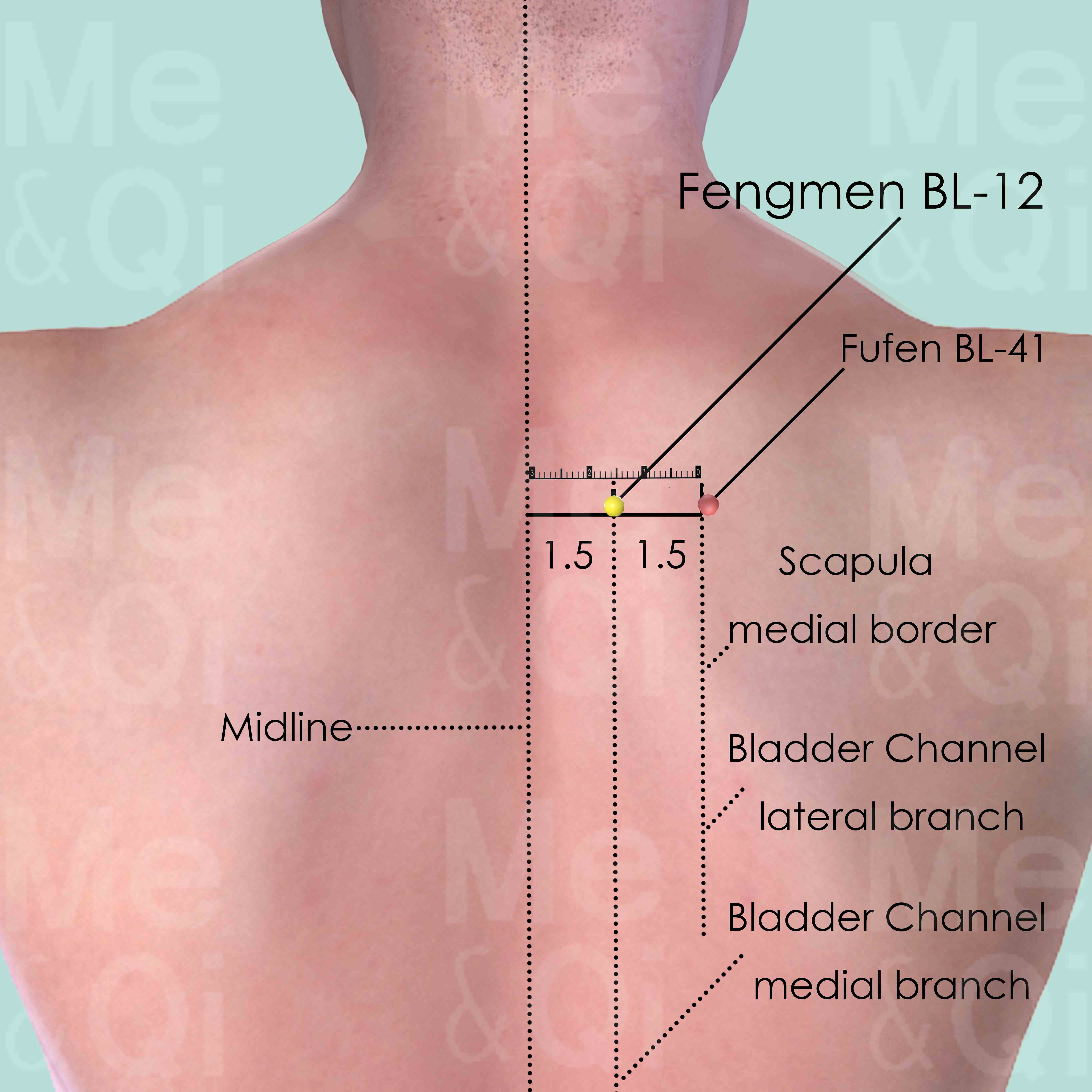
Fengmen BL-12
1.5 cun lateral to the lower border of the spinous process of the 2nd thoracic vertebra (T2).
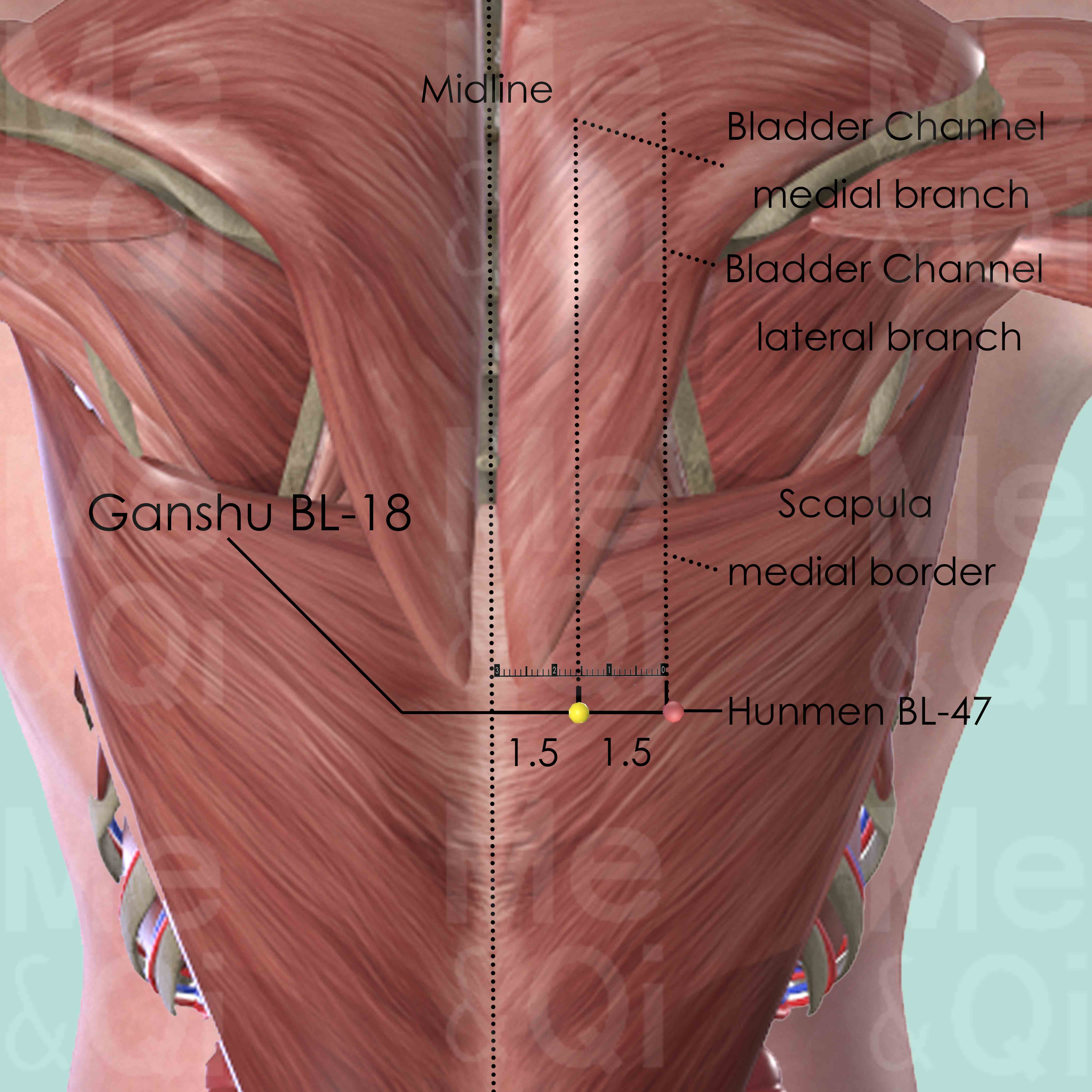
Ganshu BL-18
1.5 cun lateral to the lower border of the spinous process of the 9th thoracic vertebra (T9).
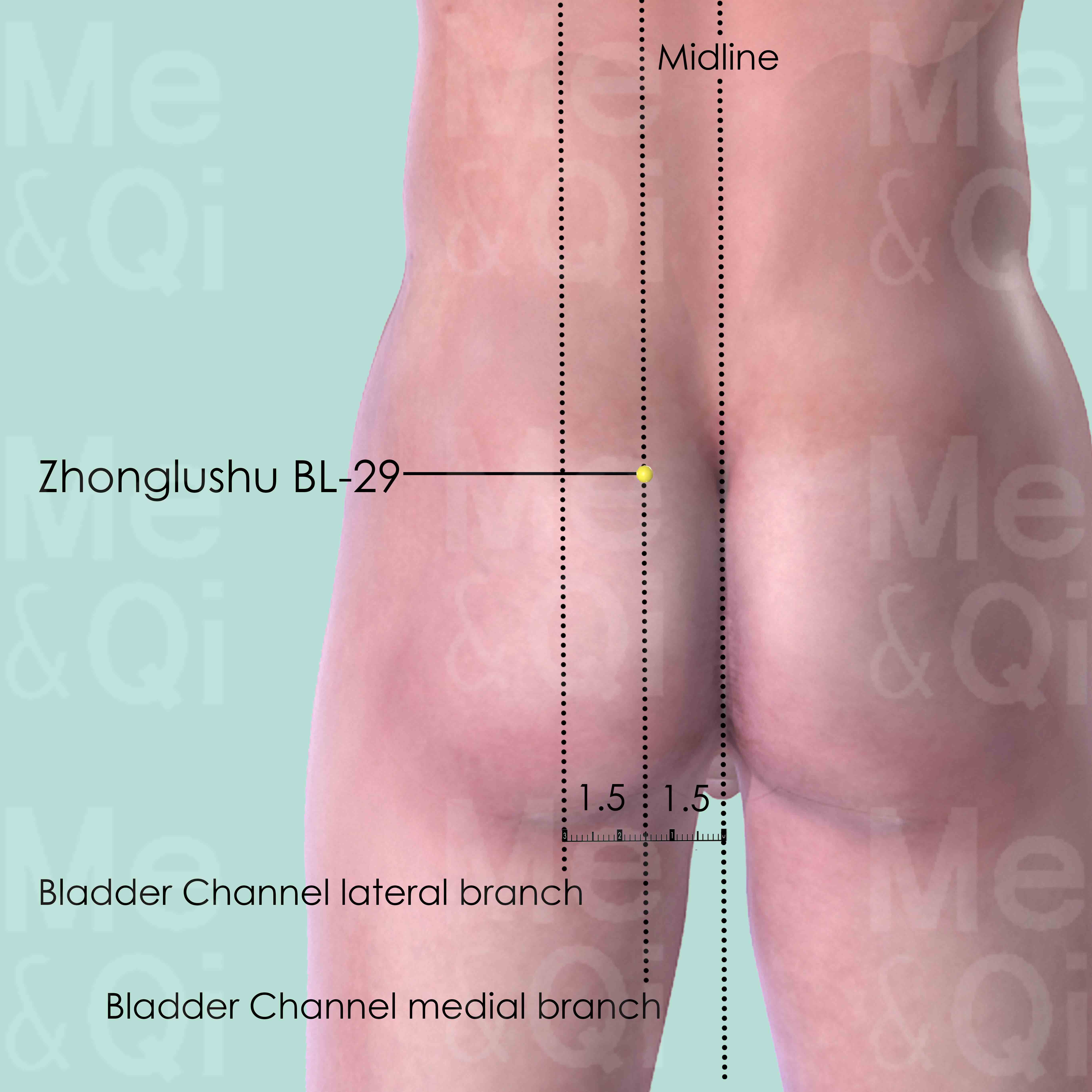
Zhonglushu BL-29
At the level of the 3rd posterior sacral foramen, 1.5 cun lateral to the posterior midline.
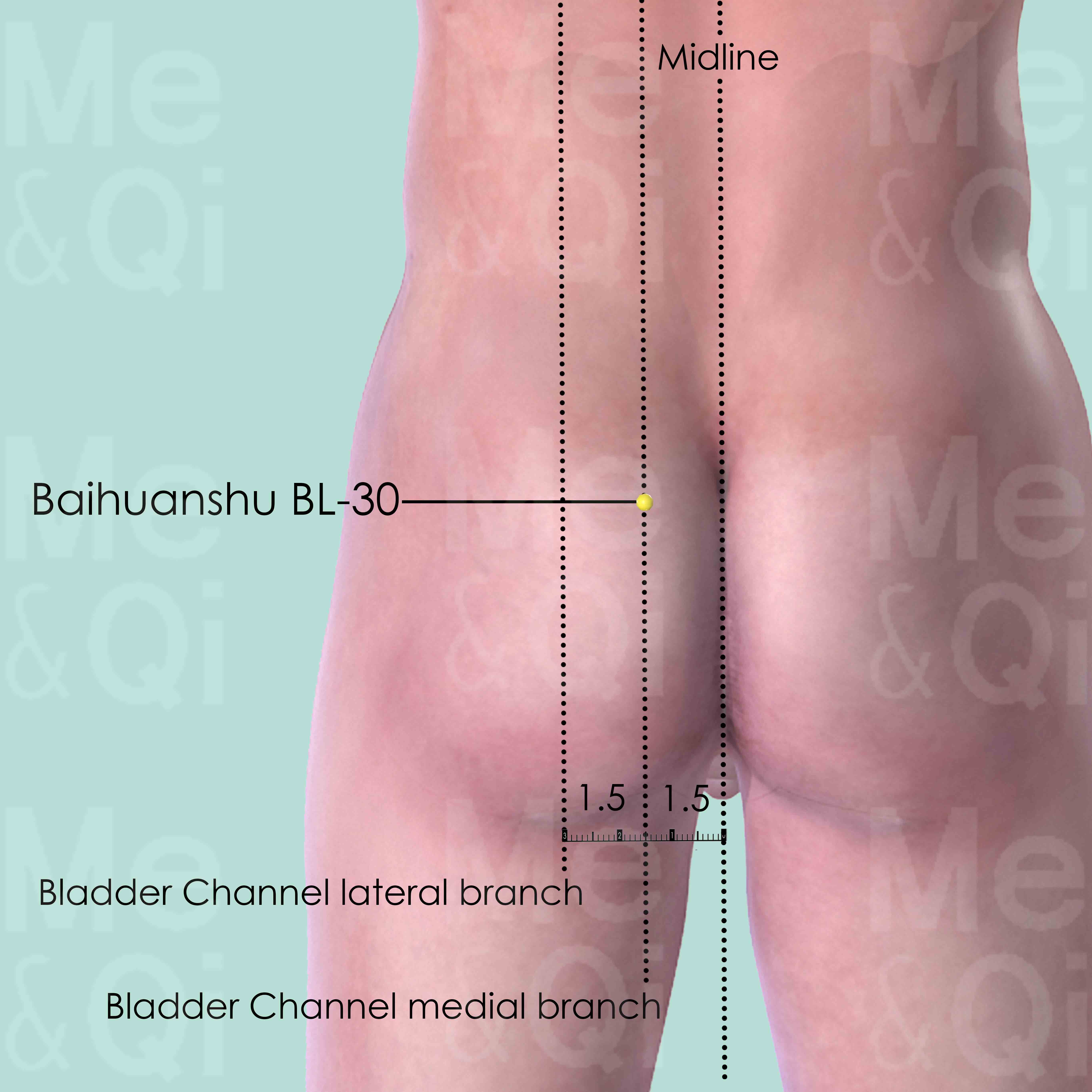
Baihuanshu BL-30
At the level of the 4th posterior sacral foramen, 1.5 cun lateral to the posterior midline.
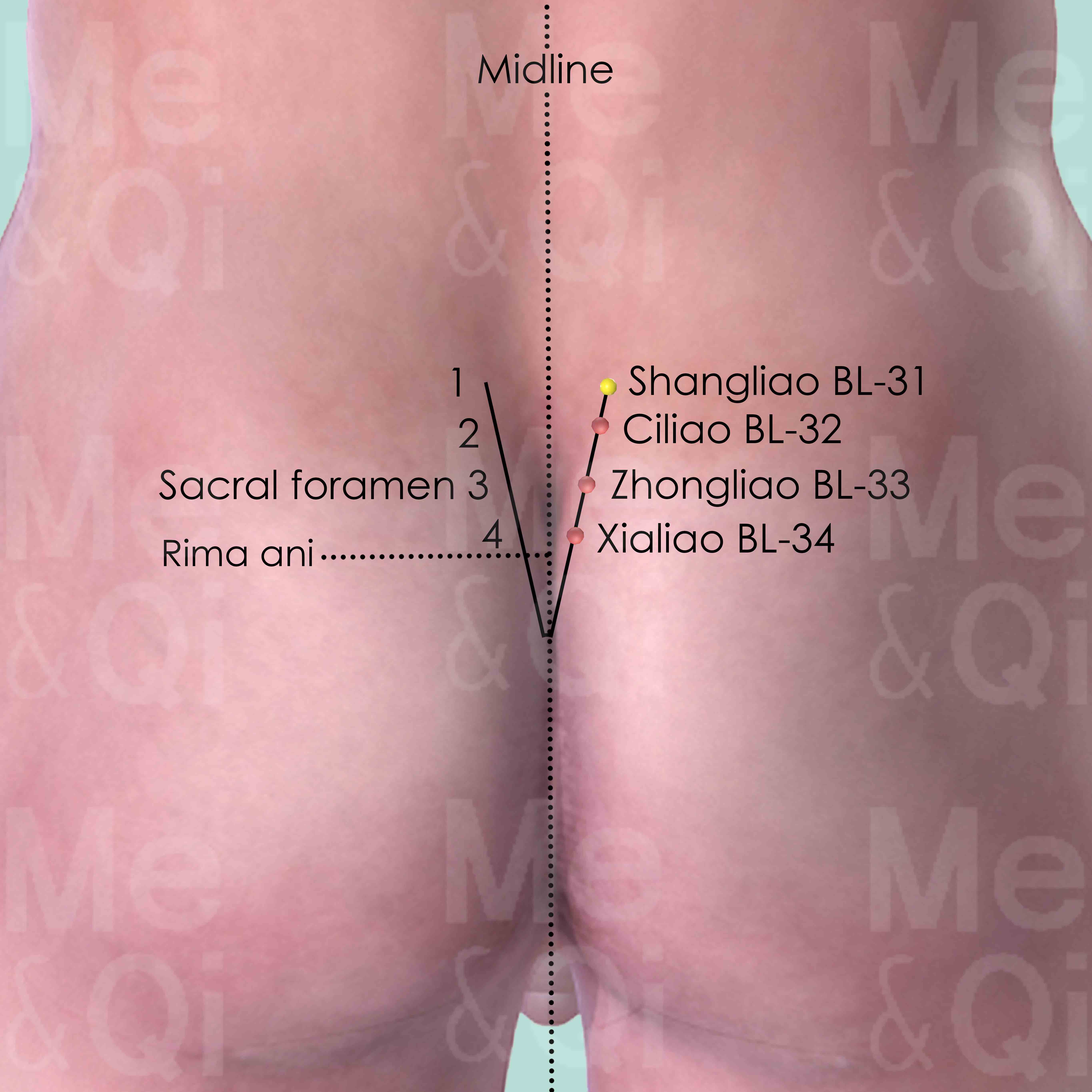
Shangliao BL-31
In the 1st posterior sacral foramen, about midway between the posterior superior iliac spine (PSIS) and the midline.
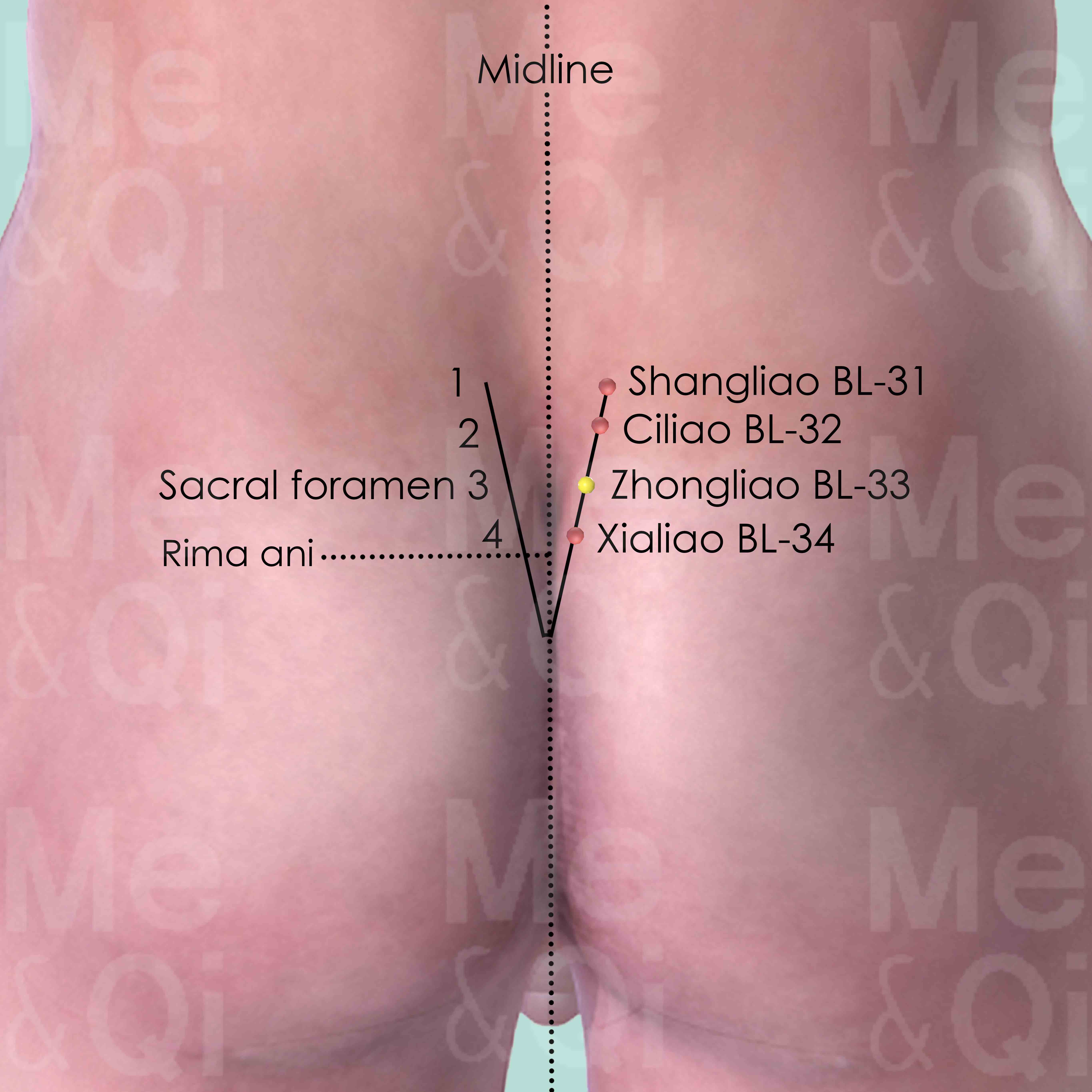
Zhongliao BL-33
In the 3rd posterior sacral foramen, between the posterior superior iliac spine and the midline.
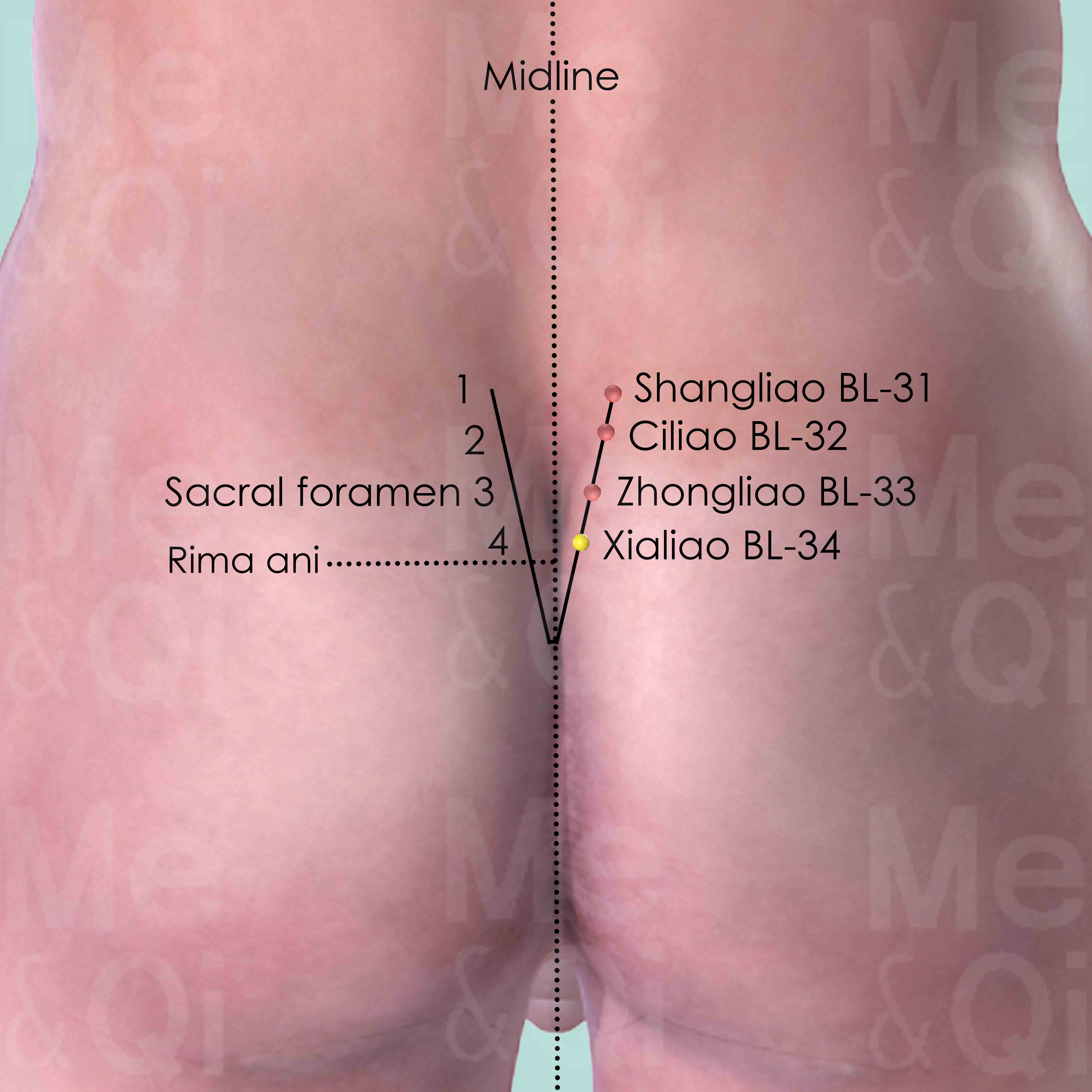
Xialiao BL-34
In the 4th posterior sacral foramen, between the posterior superior iliac spine and the midline.
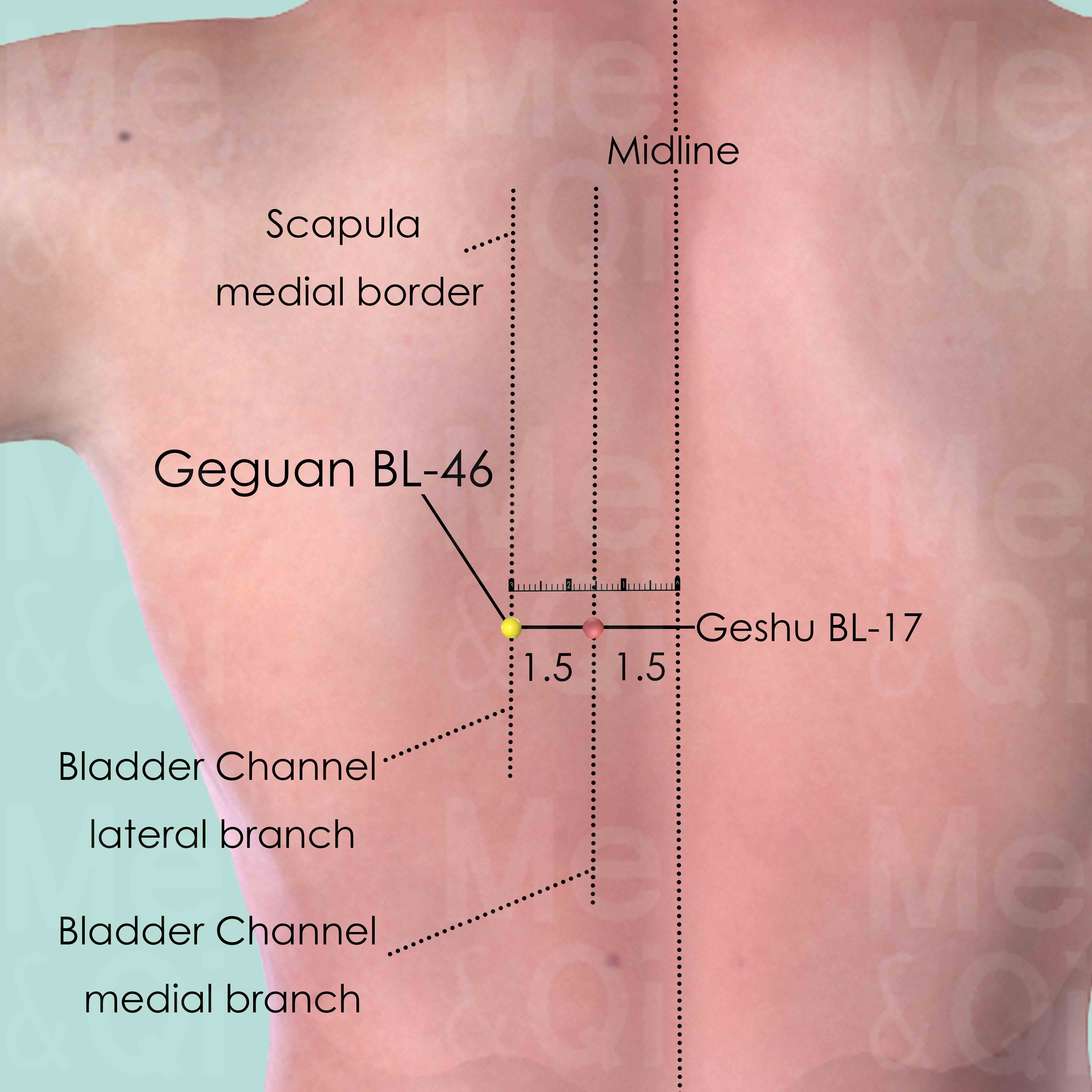
Geguan BL-46
3 cun (about 4 finger-breadths) lateral to the lower border of the spinous process of the 7th thoracic vertebra (T7).
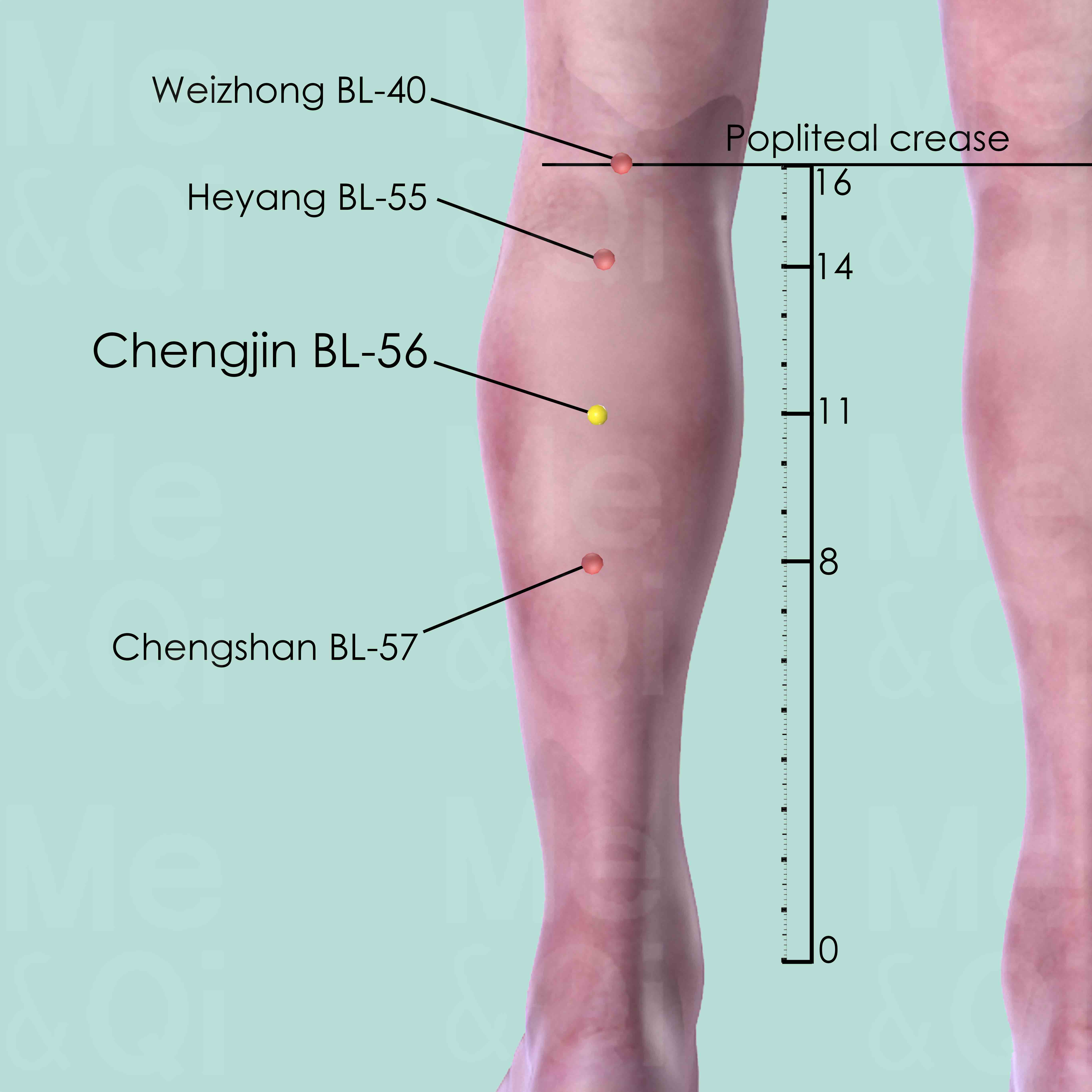
Chengjin BL-56
5 cun inferior to Weizhong BL-40 which is the midpoint of the popliteal crease. In the center of the belly of gastrocnemius muscle, midway between Heyang BL-55 and Chengshan BL-57.
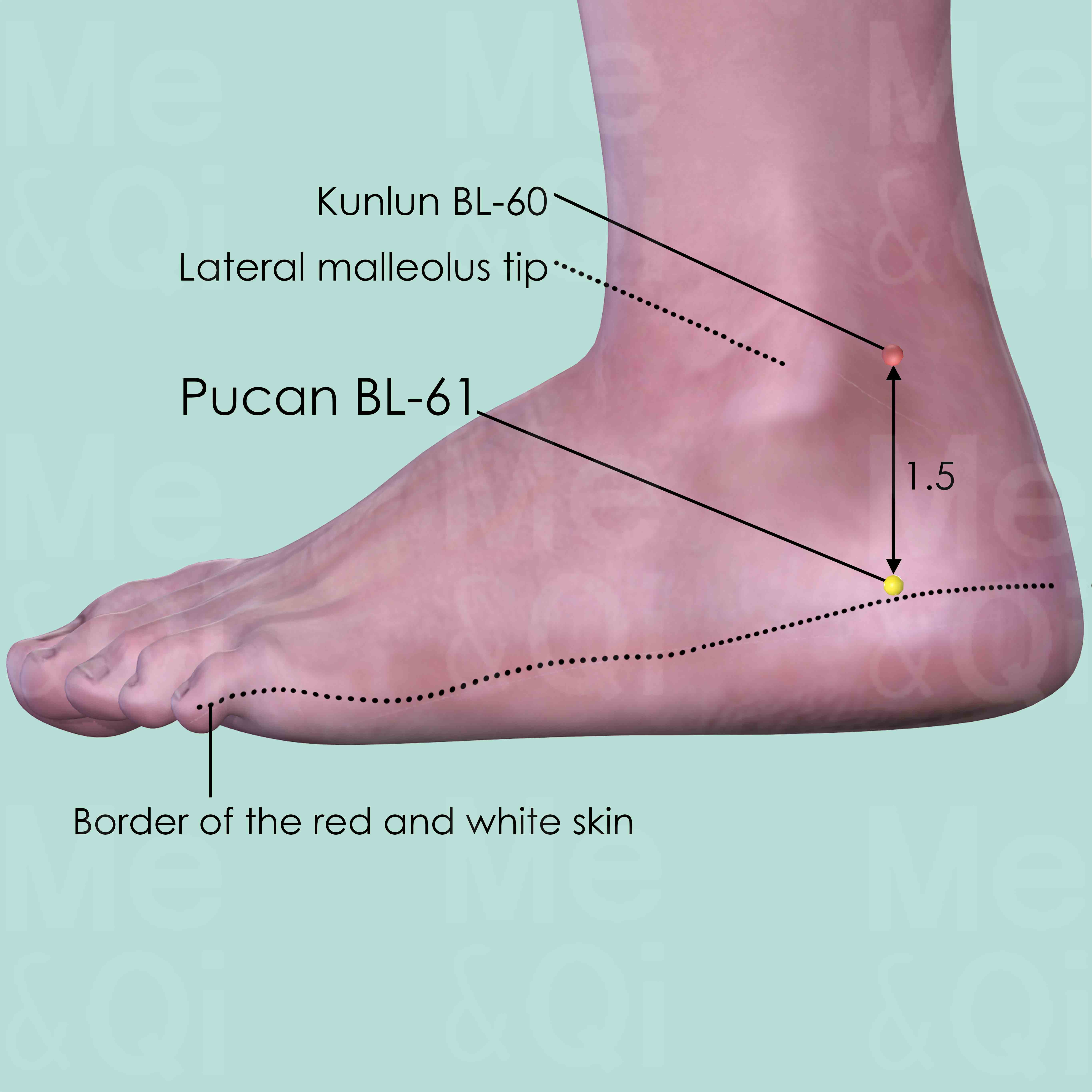
Pucan BL-61
Posterior and inferior to the external malleolus, directly below Kunlun BL-60, in the depression of the calcaneum at the junction of the red and white skin.
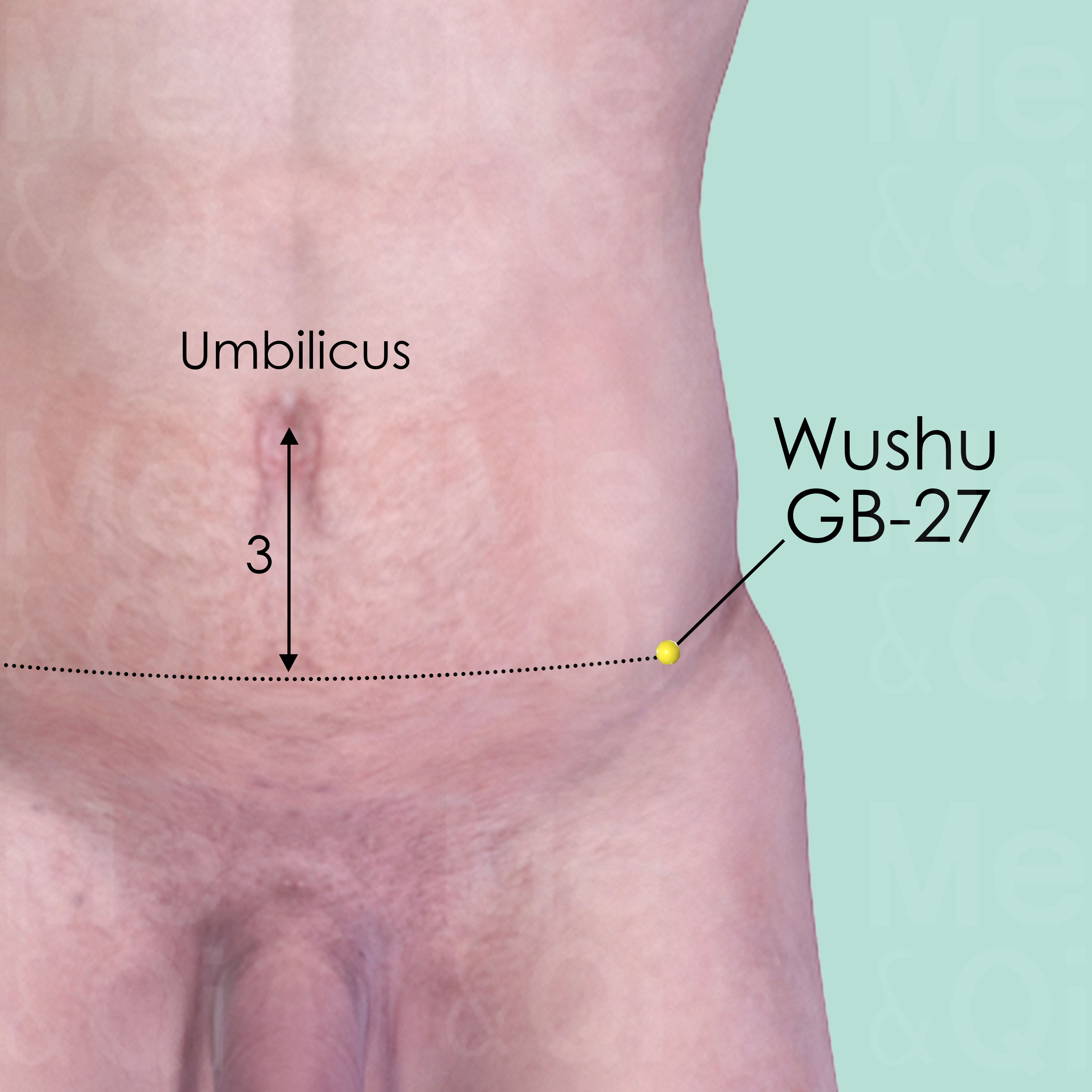
Wushu GB-27
In the lateral side of the abdomen, in the front of the anterior superior iliac spine (ASIS), 3 cun below the level of the umbilicus.
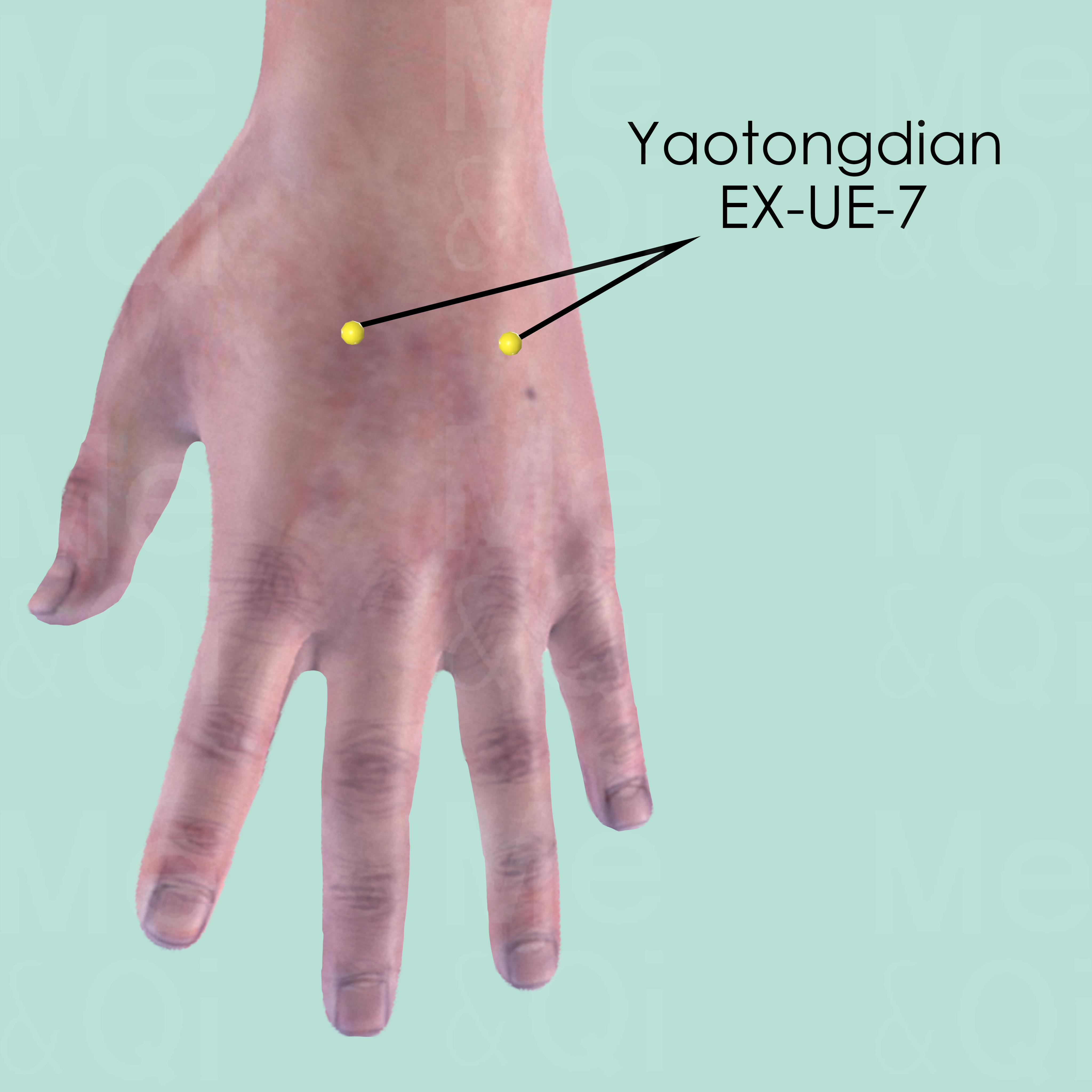
Yaotongdian EX-UE-7
This is a group of 2 points, located on the hand dorsum. One point is between the 2nd and 3rd metacarpal bones while the other is between the 4th and 5th. They are on the level of the junctions of the shaft and the base of the respective metacarpal bones.
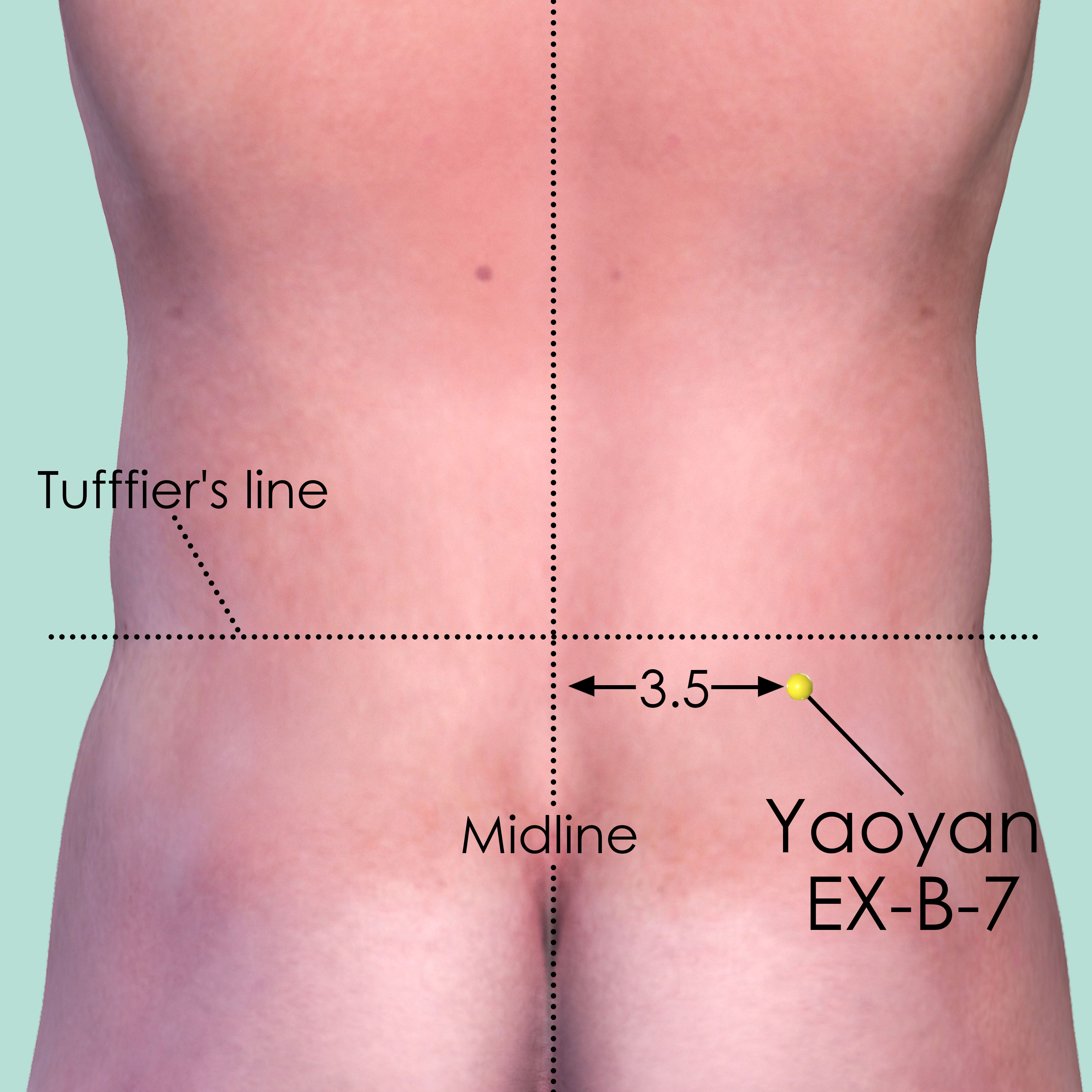
Yaoyan EX-B-7
3.5 cun lateral to the lower border of the spinous process of the 4th lumbar vertebra (L4).

